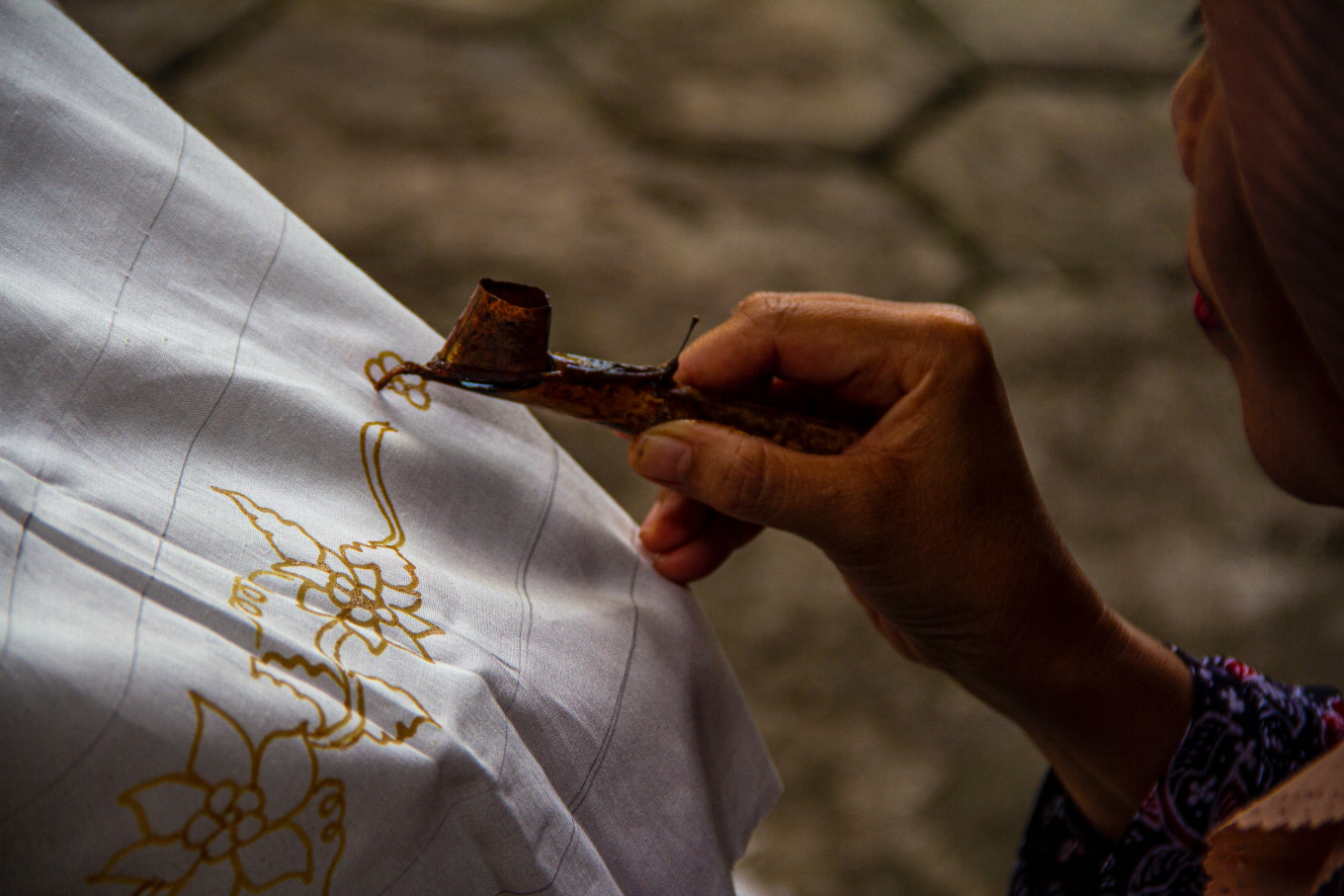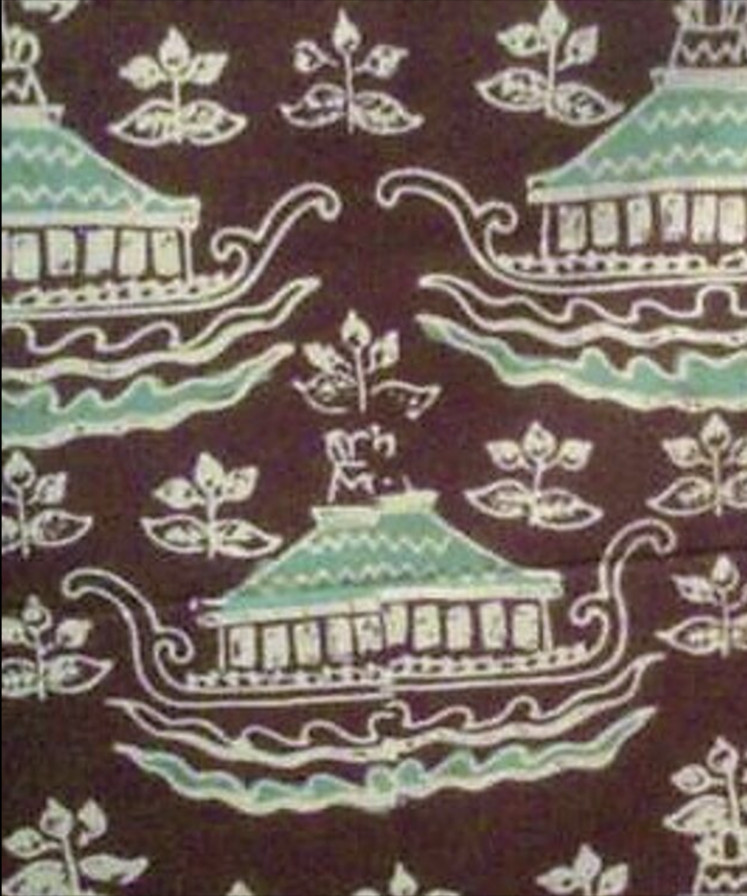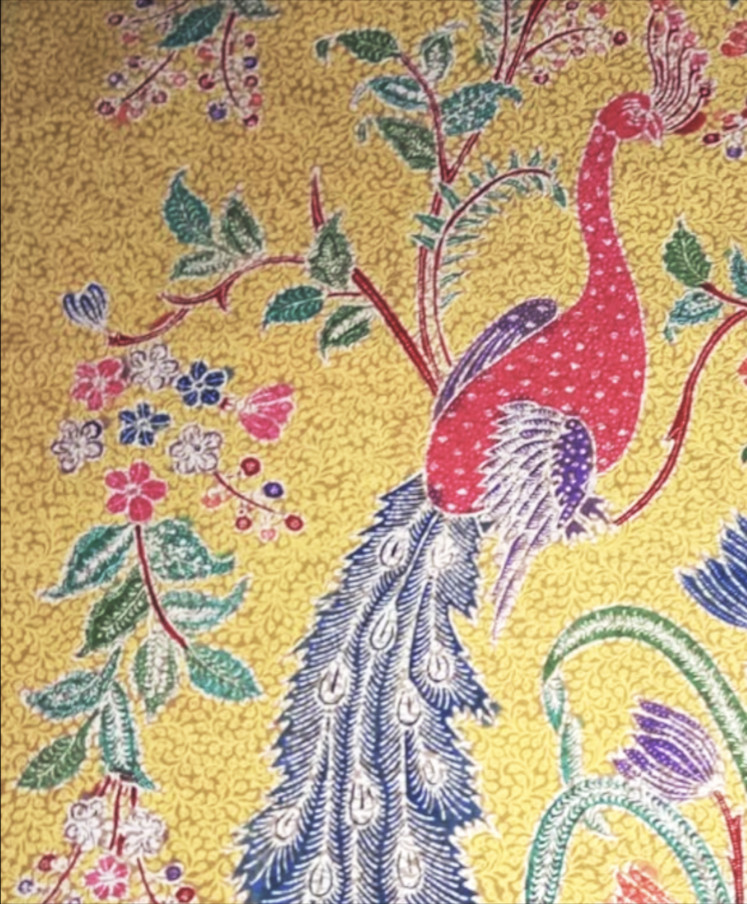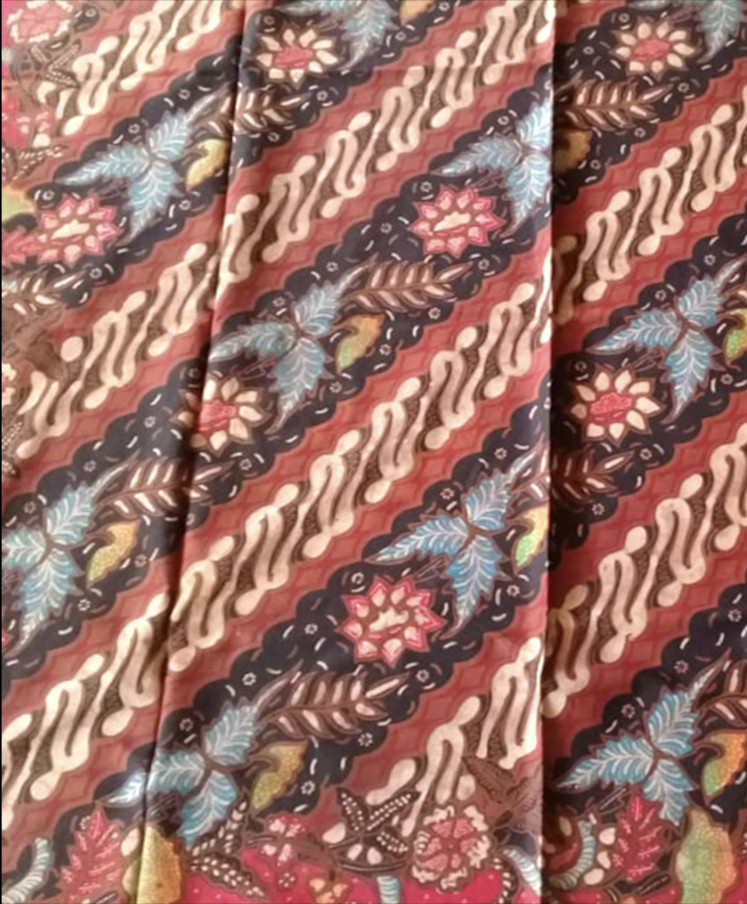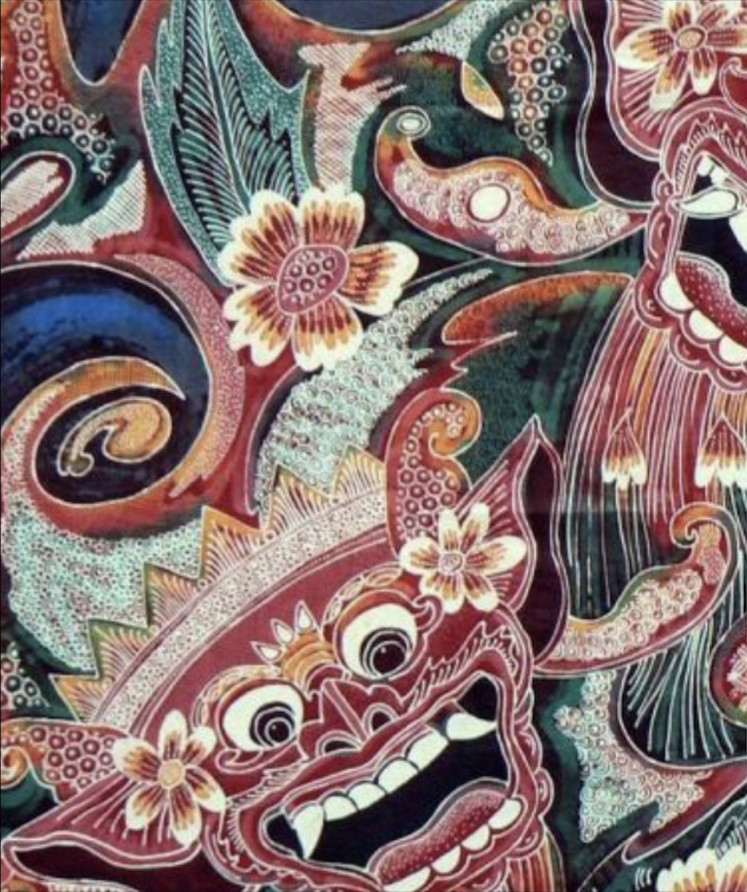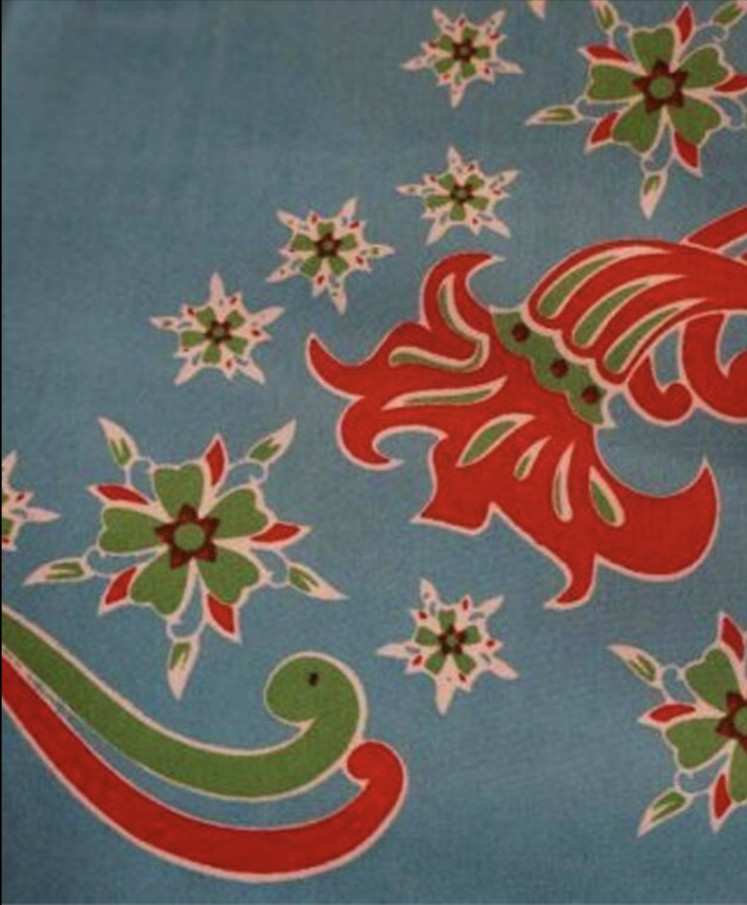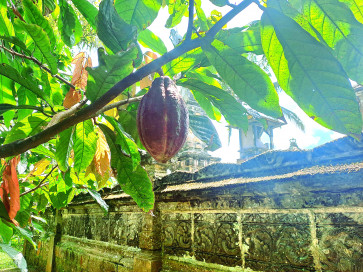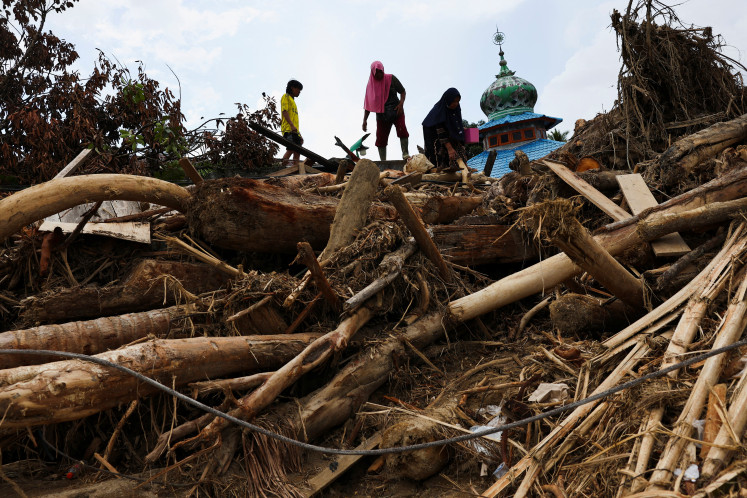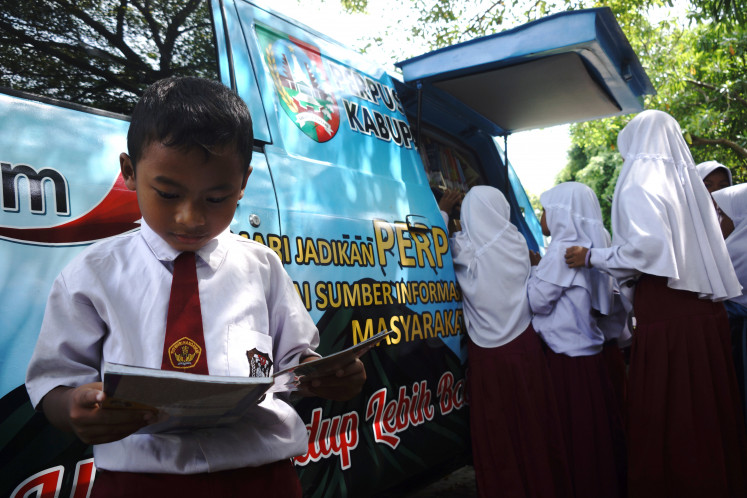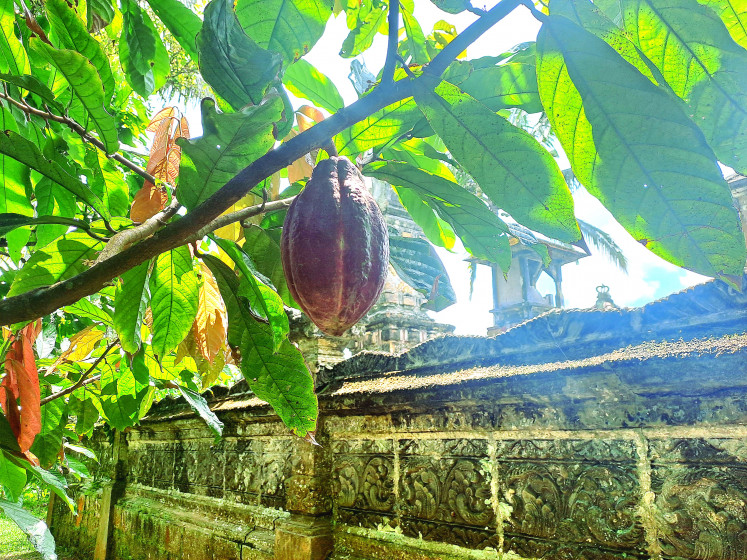Popular Reads
Top Results
Can't find what you're looking for?
View all search resultsPopular Reads
Top Results
Can't find what you're looking for?
View all search resultsTwenties: Notable Batik patterns from across the archipelago
Batik, one of Indonesia’s most beloved icons and a UNESCO Intangible Cultural Heritage of Humanity, comes in a rich variety of patterns, each with a unique origin and meaning. These are 20 batik patterns from across the archipelago.
Change text size
Gift Premium Articles
to Anyone
"Twenties" is a new column that offers The Jakarta Post's top 20 of everything under the sun, from history to pop culture and food to lifestyle.
Batik, one of Indonesia’s most beloved icons and a UNESCO Intangible Cultural Heritage of Humanity, comes in a rich variety of patterns, each with a unique origin and meaning. The Sobat Budaya cultural initiative has counted at least 1,542 different batik motifs that hail from the archipelago’s diverse regions and cultures.
1. Srimanganti, Banten
Srimanganti derives its name from the words sri (king) and manganti (awaiting). Dominated by shades of brown, this batik pattern represents future success.
2. Singayaksa, Banten
Also from Banten, the singayaksa pattern derives from the legend of Sultan Hasanuddin, the Makassarese national hero, who is said to have prayed for God’s guidance to determine where he should found his kingdom. Thus, the pattern represents hope of receiving divine guidance in life.
3. Tangerang herang, Banten
This batik pattern is the symbol of the city of Tangerang and its name contains the Sundanese word herang, meaning “clear”. The various motifs that make up the pattern represent various parts of the city: the pavilion-like structure represents the Tangerang municipal administration, the 10 doors symbolize the 10 sluicegates in Tangerang, and the dragon boat represents the water sport that commonly takes place in the Cisadane River, a major river that flows through the province, and the jasmine flower is a tribute to Nyi Mas Melati, a local heroine who fought against the Dutch colonialists in the 19th century. Tangerang herang symbolizes human virtue and leadership, and was mostly worn by the nobility in olden days.
'Tangerang Herang' batik: As a tribute for Nyimas Melati, it depicts the Indonesians fight against the Dutch colony. (Courtesy of iwarebatik.org) (Courtesy of iwarebatik.org/Courtesy of iwarebatik.org)4. Leuit sijimat, Baduy community, Banten
Representing the lives of the Baduy people, this pattern features traditional Baduy houses and storage structures on stilts. Most commonly, the color of leuit sijimat batik comes from natural dyes made from mahogany bark.
5. Sidomulyo, Central Java
Derived from the words sido (to become) and mulyo (glorious), sidomulyo is one of the oldest and most popular batik patterns in Indonesia, with its distinctly geometric design. It has existed since the Mataram Kingdom in late-16th century Java. It is typically worn at traditional royal weddings, symbolizing hope of a long and happy marriage for the newly married couple.
6. Merak lasem, Central Java
Moving onto the Central Java region, the merak lasem pattern features a peacock and symbolizes beauty, strength and elegance in daily life. Batik bearing this pattern are colorful and often dominated by red. Merak lasem has Chinese influences, adorned with decorative motifs like leafy plants, butterflies and flowers, all of which are commonly found in Chinese textiles.
7. Parang seling, Central Java
Usually worn by princesses, parang seling is another famous batik pattern from Java. Predominantly featuring parang (dagger) and flower motifs, this pattern is intended to remind princesses that they should be gentle in their daily lives, but be firm in their principles.
Royal family: 'Parang' seling pattern are usually worn by the royalties as it represents elegance. (Courtesy of iwarebatik.org) (Courtesy of iwarebatik.org/Courtesy of iwarebatik.org)8. Gurdo solo, Sumbawa, West Nusa Tenggara
Gurdo refers to Garuda, a mythical bird resembling an eagle that is the mount of the Indian god Vishnu and the centerpiece of Indonesia’s national emblem. The Garuda is seen as the source of all life and a symbol of masculinity. The pattern represents honesty, steadfastness and strength. Gurdo solo batik are usually colored using a natural dye made of a native wood called kayu tingki from Sumbawa Island.
9. Gedhog kembang waluh, East Java
This pattern contains a variety of influences from the Majapahit era, Chinese culture as well as Islam. The floral motif is meant to protect people from misfortune and is also believed to have healing powers.
10. Samudra, Madura Island, East Java
As suggested by its name, which means “ocean”, the batik is predominantly blue. It symbolizes life goals and a successful journey for people pursuing their dreams far from their homeland.
11. Sekar jati, East Java
The name of this batik pattern derives from the word sekar (flower) and jati (teak). It symbolizes hope for a mind that is strong like the teak tree and energy that is positive, like that of flowers.
12. Gigi haruan lidi, South Kalimantan
This pattern takes its name from ikan haruan (Snakehead murrel) and ular lidi (Malayan ringneck), the former a fish and the latter a snake, but both with sharp teeth. The Banjarese people of South Kalimantan believe that the animals are smart and brave because they can often find their way out of tricky situations and put up a strong fight when pursued. Therefore, this batik pattern represents cleverness.
13. Ceplok gayo, Aceh
Ceplok gayo is inspired by the kerawang Gayo carvings found in the traditional houses of the Gayo culture. The pattern represents the strong personal charm of its wearer who upholds religion and tradition while also possessing tolerance.
14. Kuda sepasang, East Nusa Tenggara
The name of this pattern combines the word kuda (horse) and sepasang (pair). The horse represents pride, strength and courage. It is believed that this batik pattern is good for a married couple, as it symbolizes a happy, loving and caring relationship between husband and wife.
15. Pantai ambon, Maluku
Pantai ambon is inspired by the beaches of Ambon, as indicated in its name. It illustrates the dynamic life and open culture of the island chain that was the center of the colonial spice race.
16. Pattimura, Maluku
The Pattimura batik pattern is a tribute to Ambonese national hero Captain Pattimura, real name Thomas Matulessy, who fought against colonial troops in the 18th century. With beating drums, traditional boats carrying warriors armed with spears, the pattern represents cooperation in the spirit of heroism.
17. Barong, Bali
This batik pattern usually features the mythical creature barong, a chimera of a lion or tiger and an eagle, an elephant and a dragon. Representing power and masculinity, the philosophy behind the pattern is that every person has two sides: the good and the wicked. The good side will help a person develop fully into a mature and wise human being.
'Barong Bali': It represents the good and bad sides of human beings. (Courtesy of iwarebatik.org) (Courtesy of iwarebatik.org/Courtesy of iwarebatik.org)18. Batik buketan, Bali
This Balinese pattern derives its name from the word bouquet and features a flower arrangement with small bunches of flowers forming a “wreath” along the edges. They are often adorned with butterfly or phoenix motifs, which represent beauty. Batik buketan was created in 1880 by a Dutch batik entrepreneur named Cristina Van Zuylen.
19. Anggrek tewu, Central Kalimantan
Anggrek tewu is named for the sugarcane or tiger orchid, the largest orchid species in the world that has yellow flowers with distinctive brown “stripes”. The people of East Kotawaringin associate the tiger orchid with their way of life, growing as it latches onto the trees around it. The flower thus represents social harmony, with people living side by side, lending support to each other.
'Anggrek Tewu': batik does not only symbolize social economy status of a person, but also the philosophy of life. (Courtesy of iwarebatik.org) (Courtesy of iwarebatik.org/Courtesy of iwarebatik.org)20. Batik tidayu, West Kalimantan
This pattern – and its name – is a portmanteau of elements from the Tionghua (Chinese), Dayak and Melayu (Malay) cultures, the three major ethnic groups in Singkawang, West Kalimantan. As such, the batik represents the region’s harmonious diversity. Batik tidayu was popularized over a decade ago through a design competition initiated by Elisabeth Majuyetty, the wife of Hasan Karman, who was mayor of Singkawang from 2007 to 2012.

